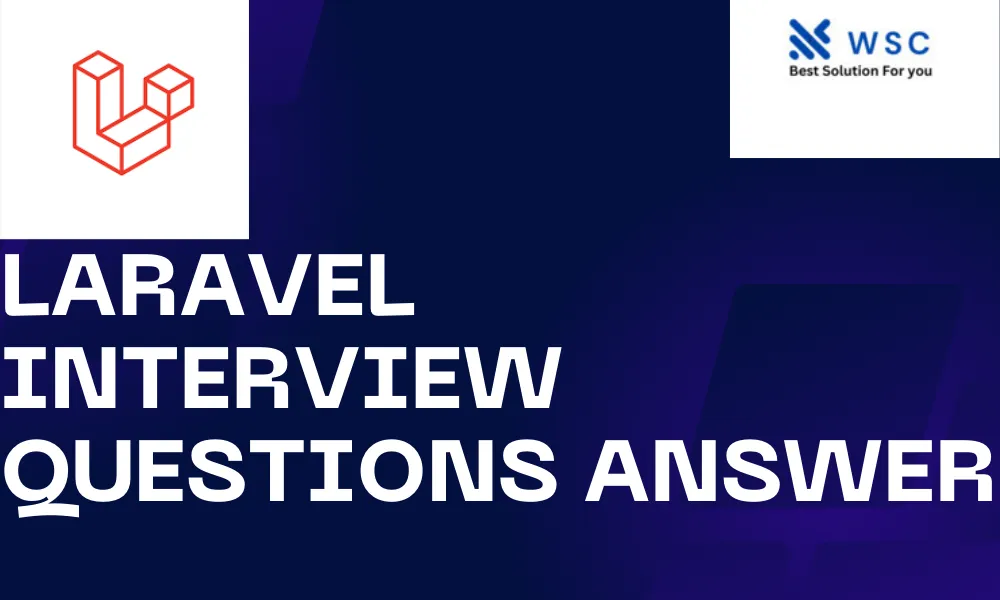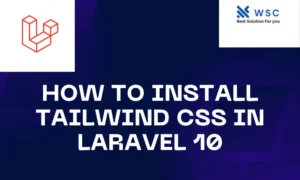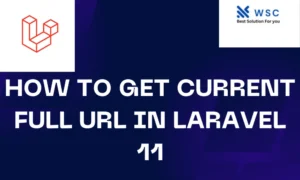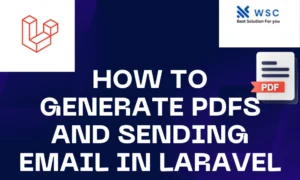Introduction
Prepare for your next Laravel interview with our comprehensive collection of Laravel interview questions. From fundamental concepts for beginners to advanced topics for seasoned developers, we cover key areas like Laravel framework fundamentals, Eloquent ORM, Artisan commands, middleware, and Blade templating. Dive into database migrations, CSRF protection, and harness the power of Laravel Mix for efficient asset management. Gain insights into job queues, events, and listeners, and understand how to implement robust API authentication with Laravel Passport or Sanctum.
Explore the nuances of Laravel policies, traits, and the Laravel scheduler to enhance your application’s functionality. Whether you’re delving into file uploads, form validation, or eager loading, our interview questions cover a broad spectrum. Stay ahead in the competitive landscape of web development by mastering Laravel, a widely-used PHP framework. Elevate your interview performance and boost your confidence with our carefully curated Laravel interview questions designed to showcase your expertise and experience in Laravel development. With a focus on clarity and depth, our questions ensure a holistic understanding of Laravel, making you stand out in your Laravel interview.
Beginner Level:
- Q: What is Laravel?
- A: Laravel is a PHP web application framework that follows the Model-View-Controller (MVC) architectural pattern.
- Q: How do you install Laravel?
- A: You can install Laravel using Composer by running
composer create-project --prefer-dist laravel/laravel project-name.
- A: You can install Laravel using Composer by running
- Q: What is Composer in Laravel?
- A: Composer is a dependency manager for PHP. Laravel uses Composer to manage its dependencies and libraries.
- Q: Explain the concept of Artisan in Laravel.
- A: Artisan is the command-line interface included with Laravel. It provides commands for tasks such as database migrations, seeding, and generating boilerplate code.
- Q: What is the purpose of the
.envfile in Laravel?- A: The
.envfile is used to configure the environment settings for a Laravel application, such as database connections and app key.
- A: The
- Q: How do you create a new controller in Laravel?
- A: You can create a new controller using the Artisan command:
php artisan make:controller MyController.
- A: You can create a new controller using the Artisan command:
- Q: Explain the purpose of migrations in Laravel.
- A: Migrations are used to version control the database schema. They allow you to modify the database structure using PHP code instead of SQL.
- Q: How do you define routes in Laravel?
- A: Routes are defined in the
routes/web.phpfile. You can use theRoute::facade to define routes for different HTTP methods.
- A: Routes are defined in the
- Q: What is Eloquent in Laravel?
- A: Eloquent is Laravel’s ORM (Object-Relational Mapping) system, which simplifies database interactions by representing database tables as models.
- Q: How do you retrieve all records from a table using Eloquent?
- A: You can retrieve all records from a table using
Model::all().
- A: You can retrieve all records from a table using
Intermediate Level:
- Q: What is middleware in Laravel?
- A: Middleware acts as a filter in the HTTP request lifecycle. It can modify the request or response, and it is applied to routes or groups of routes.
- Q: Explain the purpose of Laravel Blade.
- A: Within Laravel, Blade serves as the templating engine.. It provides a concise syntax to write views and includes features like template inheritance and control structures.
- Q: How do you perform database migrations in Laravel?
- A: You can run migrations using the Artisan command:
php artisan migrate.
- A: You can run migrations using the Artisan command:
- Q: What is CSRF protection in Laravel?
- A: Laravel automatically generates a CSRF token for each active user session to protect against cross-site request forgery attacks.
- Q: How do you create a model in Laravel using Artisan?
- A: You can create a model using the Artisan command:
php artisan make:model MyModel.
- A: You can create a model using the Artisan command:
- Q: Explain the concept of eager loading in Eloquent.
- A: Eager loading is a technique in Eloquent to load relationships along with the main model to reduce the number of database queries.
- Q: How do you validate form requests in Laravel?
- A: Form requests are validated using the
validatemethod within the controller or by creating a custom form request class.
- A: Form requests are validated using the
- Q: What is the purpose of the service container in Laravel?
- A: The service container is a powerful tool for managing class dependencies and performing dependency injection.
- Q: How do you handle file uploads in Laravel?
- A: File uploads can be handled using the
storemethod on the uploaded file or using packages like Laravel’sintervention/image.
- A: File uploads can be handled using the
- Q: Explain the difference between
PUTandPATCHHTTP methods.- A: Both
PUTandPATCHare used to update a resource. The key difference is thatPUTupdates the entire resource, whilePATCHupdates only the specified fields.
- A: Both
Advanced Level:
- Q: What is the purpose of Laravel Mix?
- A: Laravel Mix is a tool for asset compilation and management, allowing developers to use modern front-end build tools with minimal configuration.
- Q: Explain the concept of job queues in Laravel.
- A: Job queues are used to defer the processing of time-consuming tasks, improving application performance. Laravel supports various queue drivers.
- Q: What are events and listeners in Laravel?
- A: Events allow you to trigger and listen for specific actions in your application. Listeners respond to events and perform actions based on the event.
- Q: How do you create and use custom artisan commands in Laravel?
- A: Custom commands can be created using
make:commandArtisan command, and they are executed usingphp artisan command:name.
- A: Custom commands can be created using
- Q: Explain the purpose of Laravel policies.
- A: Policies in Laravel define the authorization logic for a particular resource or action, providing a centralized location for authorization rules.
- Q: What is the purpose of the Laravel scheduler?
- A: The scheduler allows you to schedule tasks to run periodically, such as cron jobs, within the Laravel application.
- Q: How can you implement API authentication in Laravel?
- A: Laravel provides various methods for API authentication, including Passport for OAuth2 authentication and Sanctum for token-based authentication.
- Q: What are traits in Laravel?
- A: Traits are a way to group reusable code in a fine-grained and consistent way. They can be used in classes to provide additional functionality.
- Q: Explain the purpose of Laravel Dusk.
- A: Laravel Dusk is a browser automation and testing tool for Laravel applications. It provides an expressive API for interacting with the browser.
- Q: What is the purpose of Laravel Mix?
- A: Laravel Mix is a tool for asset compilation and management, allowing developers to use modern front-end build tools with minimal configuration.
These questions cover various aspects of Laravel, from basic concepts to more advanced features. Feel free to explore each topic in more detail based on your learning path.
Check our tools website Word count
Check our tools website check More tutorial





Some really superb info , Sword lily I found this.